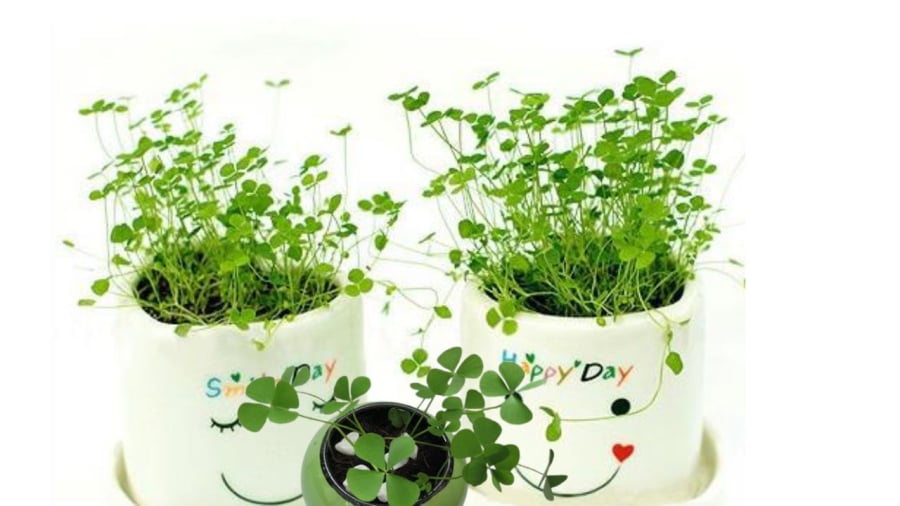**The Significance of the Three-Leaf Clover**
The story of the three-leaf clover and its association with good luck is well-known across the globe. This plant has become a symbol of fortune and positivity, and its presence in one’s home is believed to bring encouragement and motivation to those who hold this tradition dear.
The three-leaf clover, with its heart-shaped leaves, is a beautiful addition to any indoor space. Its unique structure, resembling three hearts huddled together, is a symbol of love, protection, and the accumulation of good luck. A rare mutation of this plant results in four leaves, which further adds to its allure and significance.

Distinguishing the Three-Leaf Clover from Other Plants
The three leaves of this plant typically represent Faith, Hope, and Love. Its delicate, heart-shaped leaves and refreshing green color make it aesthetically pleasing, earning the admiration of many. The folklore surrounding the three-leaf clover, intertwined with themes of love and good fortune, further adds to its appeal.
Therefore, if you are drawn to the symbolism and beauty of this plant, you can certainly consider growing it as an indoor decorative plant.
Important Considerations for Growing the Three-Leaf Clover
In Vietnam, it is common to confuse the legendary three-leaf clover with other similar-looking plants, such as:
Oxalis corniculata: Also known as sour grass, this plant has a three-leaf structure and produces yellow, white, or purple flowers. It is commonly found along roadsides and in tropical regions like Vietnam. Sour grass is edible and has medicinal properties in traditional medicine. While it can be grown in pots on balconies or indoors, it tends to thrive better when left to grow wild rather than being transplanted.
Ipomoea aquatica: This is a wild plant that typically grows in watery wastelands. It has leaves that branch into four sections, but the heart-shaped curves are not as pronounced as those of the three-leaf clover. This plant prefers a moist environment and is challenging to cultivate in dry conditions, making it unsuitable for indoor potting. It is more commonly grown outdoors in water gardens.
Legendary Three-Leaf Clover: This is a distinct herb with three leaves, and it can occasionally mutate to form four leaves. Lucky clovers tend to grow in clusters, and their flowers bloom in vibrant hues of red, white, and purple. Additionally, the flowers can be dried and used to make herbal tea.
Given these distinctions, if you wish to cultivate a three-leaf clover for its symbolic value, it is advisable to select the third option. However, if your primary interest lies in the aesthetic appeal of the leaves, all three plants can be grown indoors. Just remember that sour grass (Oxalis corniculata) and three-leaf clover prefer bright and sunny locations like balconies, while water spinach (Ipomoea aquatica) requires both ample sunlight and water, making it less suitable for indoor cultivation.
Cultivation Methods for the Three-Leaf Clover
For sour grass (Oxalis corniculata): You can transplant a wild-growing sour grass with roots into a pot with loose, airy soil and place it on a windowsill with moderate sunlight. Water it daily, but avoid over-saturation.
For the legendary three-leaf clover: Purchase seeds and sow them in loose, airy soil with 50% humidity. This plant thrives in a cool temperature range of 20–25°C and does not require abundant sunlight. During the germination phase, it only needs 3–4 hours of daily sunlight, increasing to 5–6 hours as the plant matures.
Reference information for contemplation
The Lucky Few: Unlocking Abundance with the Power of the Double Fortune Tree
The laws of the Five Elements dictate that the tree “iron wood orchid” belongs to the Wood element and has a harmonious, generative relationship with the Fire element, as Wood fuels Fire. Thus, this tree is an auspicious presence for homeowners of both the Wood and Fire elements, bringing balance and prosperity to their abodes.







































